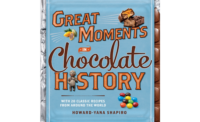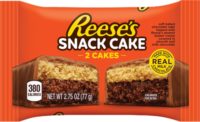New book looks at ‘Chocolate as Medicine’
Authors research medicinal uses of cocoa over the centuries.

While it may be easy to understand why ancient cultures thought chocolate could provide an energy boost, and cocoa butter was used to treat skin disease, a new book also reveals that chocolate has been used as a remedy for tuberculosis and even snake bites.

|
| © The Royal Society of Chemistry |
Chocolate as Medicine: A Quest over the Centuries, written by Philip K. Wilson and W. Jeffrey Hurst, looks at the different ways cocoa has been used for medicinal purposes over time.
Wilson is a professor of humanities and the director of The Doctors of Kienle Center for Humanistic Medicine at Penn State College of Medicine, while Hurst is a principal scientist at Hershey Foods Technical Center and an adjunct professor of comparative medicine at Penn State Milton S. Hershey Medical Center.
The two found each other through one of Wilson’s students, who first had done a research project on the topic.
Wilson says they were surprised to realize that there wasn’t any book, in any language, dedicated entirely to the way chocolate has been used as a medicine for health, or in relation to diseases and disorders.
So, they found a publisher interested in the project, and spent about 18 months researching everything from old world folktales to current-day marketing literature.
“It was surprising for me to find that over time chocolate has been recommended for just about any ailment that we could think of,” Wilson says.
And while they did find some surprising uses — such as the snake bite remedy — they also found that many of the uses were the same ones we would think of today.
“Three of the most common reasons were to promote some kind of weight gain, to improve digestive capacities and to just stimulate some weak people,” Wilson says. “An energy boost is one of the most sustainable reasons that chocolate has been used. That was nice to find that continuity.”
The chapters are broken down by timeline.
“The last chapter is sort of a reprise of where it is in medicine right now,” Hurst says. “[It] looked at the current research of cocoa.”
And while the book is filled with medical history, Wilson says it doesn’t have any medical advice in it.
“It’s not a self-help book, it’s a historical coverage. I certainly didn’t want to give any glimpses of false hope out there,” he explains.
Wilson says he’s already taught the book as part of a survey class on the history of medicine, and mid-way through the course, Hurst came over to talk to the students as well.
Wilson thought the students might have some really good questions for Hurst about the medicinal uses of cocoa, but of course, they really just wanted to know what it’s like to work for a candy company.
“He had a blast talking to them about things in his field,” Wilson says. “It’s been test-marketed for our class. They were excited to actually be in the class where the teachers had actually written the book, and vice versa. We were actually really excited to hear their take.”
The book was released in October by the Royal Society of Chemistry,and was named Gourmand Magazine’s Best Book of 2012 in the category of Chocolate for books published in the United Kingdom, and second place in the same category for books published throughout the world.
“We were pretty darned excited,” Wilson says. “This has been one of the most fun projects I’ve set myself to.”
The fun’s not over yet. Now the two are co-editing a book about chocolate and health that’s slated to come out in 2014.
Looking for a reprint of this article?
From high-res PDFs to custom plaques, order your copy today!







